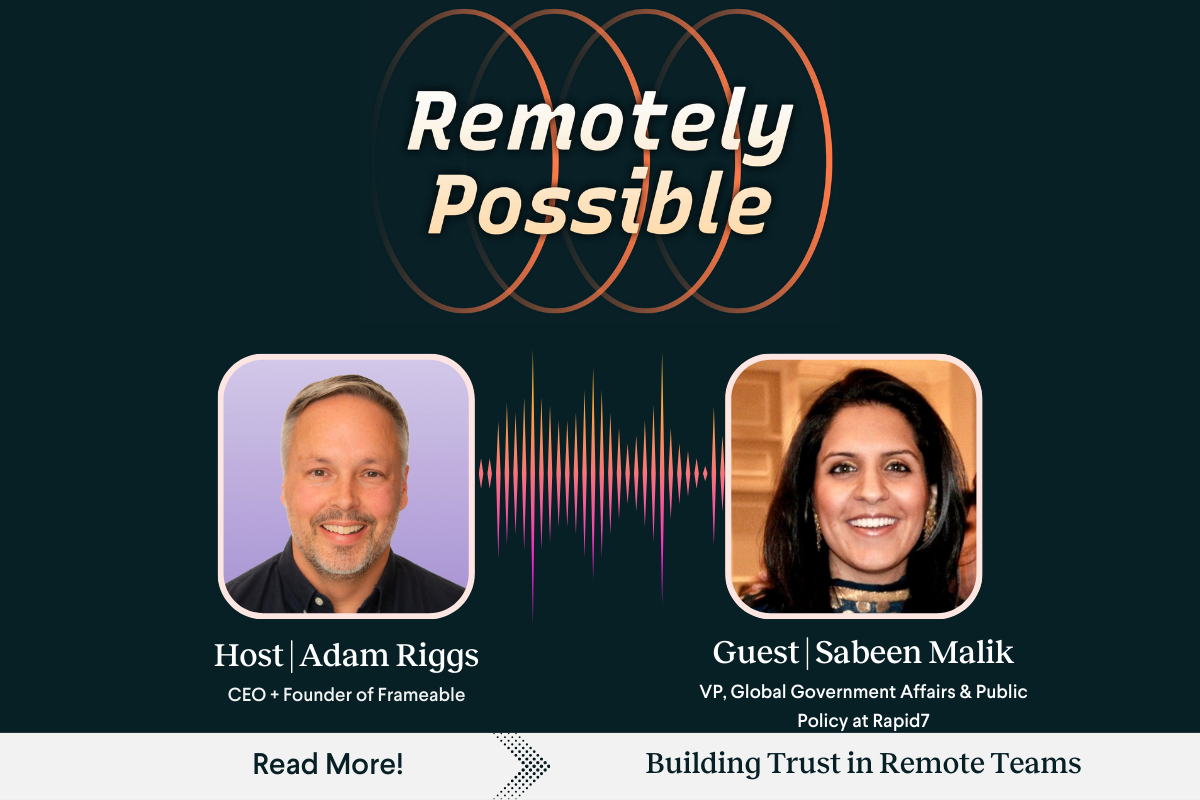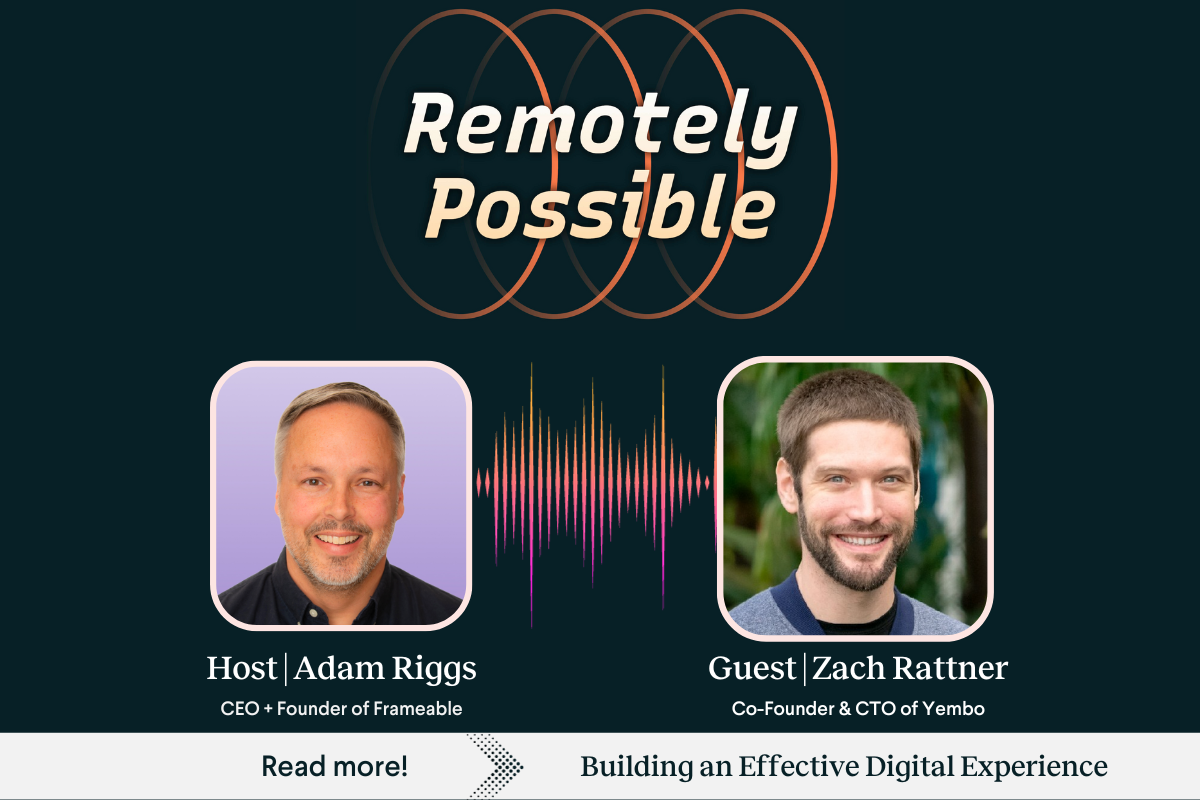Many tools on the market can help remote and distributed teams channel their creativity. But instead of forcing teams to use a small set of company-sanctioned tools for the team’s unique problems, it’s helpful (and empowering) to give employees the freedom to use the tools and processes that work best for them.
In the seventh episode of the “Remotely Possible” podcast, I spoke with Sabeen Malik, Vice President of Global Government Affairs and Public Policy at Rapid7, to discuss building trust and enabling innovation on distributed teams. Here’s an excerpt from our conversation, including the three elements of trust and how to strike the right balance of synchronous and asynchronous communication when problem-solving.
Introducing Sabeen and Her Remote Cybersecurity Team
Rapid7 is a cybersecurity provider with solutions spanning detection and response, vulnerability management, and application security. Sabeen is building her team and currently works with five people in the U.S. and U.K. She is used to working with remote-first teams, partly due to her previous role at Thumbtack.
“Thumbtack very much is built around this idea [of] remote first,” she said. “Even pre-pandemic, the idea was to think about this model and how are we going to think about remote-first work in an environment where so many more tools were available for folks to work not only across time zones, but across different operational capacities, and what does that look like to bring that all together.”
Why Trust is Essential for a Healthy Distributed Team Culture
Sabeen recognizes that many teams use video calls to tackle challenges. She encourages companies to establish clear rules and expectations about when cameras can be on or off as a way to help employees process information in their preferred mode.
“I personally don’t feel like I need to see everybody when I’m doing what I need to do, which a lot of times is discussing concepts and information and deliverables,“ she said. “At the same time, I have found there is a little bit of a difference between consistently building trust in teams and having video on and off and everyone understanding what the rules are as to why someone may turn their video off and what the norms are around that.”
Trust is vital for enabling an effective distributed team that achieves the innate advantages of remote work. Sabeen encourages leaders to consider what trust means to them and their organization.
“It’s important to think about ‘what is trust at the end of the day?’ and ‘what are we actually looking for?’,” she said. “Thinking about how do you continue to use the tools and yourself, in terms of your ideas, to build it.”
Sabeen shared her own perspectives on the three critical elements of trust. “I think about three elements: competency, integrity, and goodwill. For a team that has a lot of external stakeholders, trust is built by meeting them where they build trust. Internally, it’s more about how do you share with your teams the ideas around each one of those as a norm-setting behavior.”
Over the course of our conversation, Sabeen rejected the notion that in-person teams are more collaborative or innovative because of serendipitous encounters.
“[The idea] that you’re just sitting randomly and someone comes into a booth or someone stops by your workstation, and you have this amazing idea… I think that’s a little bit lionized or this mental model that I’m not sure most folks are operating that way,” she explained. “I think it has to be a little more structured than assuming it’s going to happen just because you all happen to be in the same space, and it’ll randomly happen.”
When facing a challenge, Sabeen says that leaders should assess if they are explaining the problem well enough or if people need a change in time and space to let creativity flow. Innovation often comes down to allowing people time to think through challenges and work with their preferred tools.
“One of the things I’m doing more is asking folks the best ways that they think about creative ideas and how do they capture those,” she said. “If you’re at the early stages of a problem or a strategy, I tend to find that synchronous work tends to work better. What you’re truly trying to do is collect ideas and then shape ideas so everyone understands the end goal of executing on something. And then in terms of how and why and what the things are that are related to the execution, asynchronous tends to work a lot better.”
For more of Sabeen’s insights into building trust on remote teams, including a more detailed explanation of the three elements of trust and the tools her team uses, listen to the Remotely Possible Podcast, Episode 7. Interested in sharing your distributed work experience with our listeners? Apply to be my guest for a future episode.


